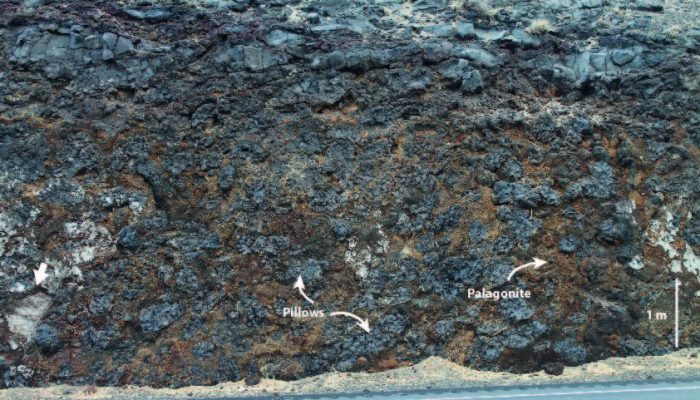Oceans are “populated” by millions of specimens of microscopic organisms which constitute the phytoplanktonic communities (e.g. diatoms, dinoflagellates, cyanobacteria and coccolithophorids). These tiny organisms are important indicators of the “health” of present oceans and their remains constitute important tracers of past paleoenvironmental conditions. The ocean is in fact the oldest and larges ...[Read More]
When lava meets water…
Pillow-palagonite complex forming as a result of hot lava entering a former river channel or lake in the Columbia River Flood Basalt Province, Washington State, USA (c. 15 My). Individual sediment packages were picked up from the bottom of the water body and trapped within the lava complex (see white arrow). Orange-brown palagonite is a type of clay which forms through the break-down of volcanic g ...[Read More]
EGU’s lost strata… what happens to conference carpets?
Being a stratigrapher or not, there’s one stratum you have all trod upon if you ever went to the General Assembly (GA), without probably noticing it. The uppermost unit of EGU’s GA floor, a ca. 5 mm thick layer with a soft rubbery texture and peculiar light-grey colour, outcropping over the whole poster halls: Carpet! Yes, the focus of this post is the carpet draping the GA’s floor wit ...[Read More]
Famous geological sites: Delicate Arch, Utah
Delicate Arch is probably the most spectacular natural arch in Arches National Park, Utah. Delicate Arch is made of the Middle Jurassic Entrada Sandstone, which was deposited in various environmental settings, particularly beaches, tidal mudflats and deserts. Arches National Park attracts more than 1.5 million visitors per year.


